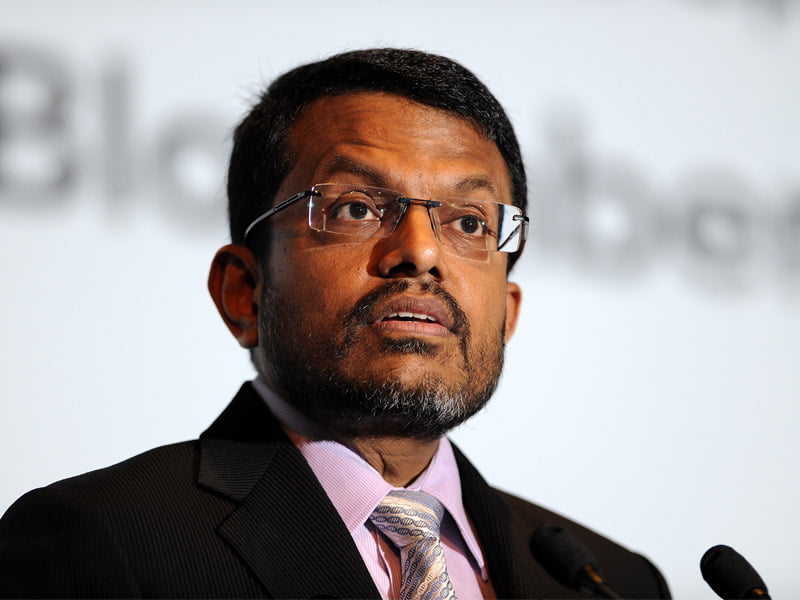Perhaps the main attraction to Singapore, the city-state pulling out all the stops to become the technology hub of Southeast Asia, is simple: money.
Not only is Singapore full of startup accelerators and government backed technology programs, to put it plainly, people quite like living in Singapore. It’s clean, it’s safe and everything works unlike other parts of Asia that appear ore exotic, to use an old fashioned word to westerners or people from the developed nations of Japan, South Korea and Taiwan.

Singapore also has all the important hard and soft infrastructure: airport connectivity, digital connectivity, educated people and scores of multinational companies in all sorts of sectors who have made the country their headquarters.
But most of all Singapore has money and this is central, and in two key ways, for technology companies eying the country as a base.
The first is the enormously well funded government programs and funds that are backing Singapore’s technology journey, most recently crystallised in its Smart Nation and Infocomm 2025 strategies.
The Singapore Government has two of the world’s largest sovereign wealth funds (SWF). One is Temasek Holdings, which amongst its myriad investments is the major shareholder in Singapore Telecommunications, the owner of Optus and shares in five other regional mobile companies. Temasek has a string of technology investments and recently was part of a $35 million second fund for Singapore-based venture capital firm Golden Gate Ventures. The company already has investments in 25 companies in seven countries across the region.
Singapore’s other SWF is the Global Investment Corporation (GIC). Also a heavy investor in technology, both funds have over S$300 billion in assets under management
Apart from bountiful government funding the other “money” opportunity that lies in Singapore is servicing its booming financial markets and a funds management industry that is beginning to rival – and soon overtake – Switzerland in size.
One of the Singapore Government’s key goals, as outlined by its central bank the Monetary Authority of Singapore (MAS), was creating a smart financial sector using the industry’s latest buzzword: Fintech (financial technology).
“A sector where I believe technology is going to be fundamentally transformative is financial services. In fact, there is a new buzzword: “FinTech”, financial technologies or the integration of finance and technology,” MAS Managing Director Ravi Menon said in a recent speech.
The MAS has its own $225 million technology investment fund and Mr Menon said two things are happening in FinTech right now.
Firstly, non-financial players are using technology to offer innovative solutions that mirror the services traditionally offered by financial institutions and it is these non-financial firms that look set to disrupt the financial industry.
The second Menon noted, is that financial institutions are fighting back.
“As disintermediation threatens financial institutions, they are being pushed into a rethink of their business models. Rising costs, shrinking margins, and the weight of new regulatory requirements are pressing financial institutions to look into more cost-efficient ways of running their businesses. They are increasingly turning towards innovation and technology for solutions, in an ironic way, the FinTech insurgency is forcing change among the incumbent financial institutions.”
Mohit Mehrotra, a consulting partner at top four accounting and services group Deloitte, told InnovationAus.com that this trend was on the move in Asia.
“Funds management has started being disrupted in the western world by new financial technology as we move to address the needs of the rewired investors,” Mehrotra said.
“Many attempts are being made towards digitisation of existing capabilities. However not many examples surface that demonstrate scale being achieved through disruptive plays outside China.”
Adam Lyle is an Australian change management consultant who upped sticks from Sydney 13 years ago and moved to Singapore, via Taiwan, to open an office for his then Aussie employer.
Attracted by the potential of the convergence of big data and the digital economy he co-founded Padang, which organises a variety of open innovation events including Singapore Government and private backed hackathons – one recently for Singapore’s Infocomm Development Authority involved over 1000 people.
“At the moment there is a classic attackers type approach in financial services, in the same way as mobile companies attacked traditional telcos,” Lyle told InnovationAus.com
Apart from “fintech” the Singapore Government has identified education, healthcare and tourism as key sectors for technology investment. The city also has well established high end electronics and a cutting edge aerospace sector.
Lyle said that health and ageing are also very hot consumer sectors, fuelled by the potential of Internet of Things and data analytics, given the growing cost of government’s health budget as we all live longer and avail ourselves of more sophisticated services.
“Health and ageing is where everybody wants to be; a combination of Fitbit type wearables and data analytics are all aimed at trying to make us healthier. Then there is early diagnosis, integration of health records and remote diagnosis of diseases.”
“But a lot of smart money is chasing the industrial sector where the opportunity for the IoT is huge. Estimates vary from 30-50million, devices will be connected by 20/20. The question is how do you connect all those sensors to provide a better service?
“But the potential is huge. Imagine every machine has become a “smart” machine relaying data , analysing its performance , catching errors before they occur, planning preventive maintenance, maximising production efficiency and reducing downtime.”
This is Part Two of a two-part feature exploring Singapore’s tech-savvy policy approach to building a smarter nation. You can read Part One here.
Do you know more? Contact James Riley via Email.

